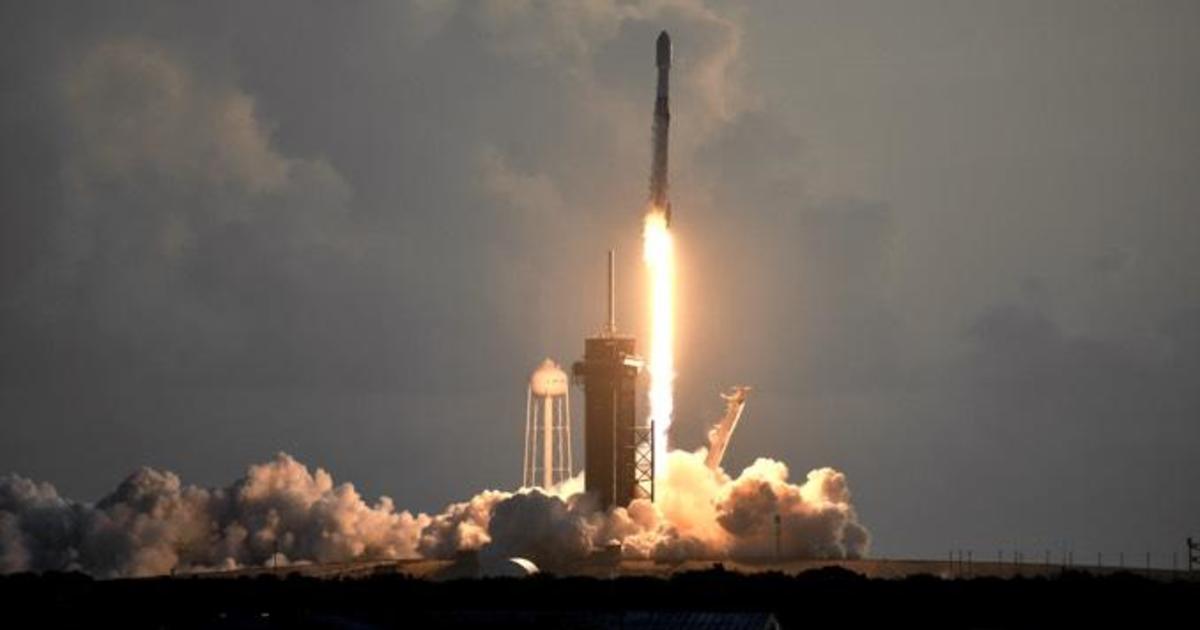Shrugging off a Falcon 9 launch abort last week and a scrub Monday, SpaceX fired 60 more Starlink internet satellites into orbit Tuesday, the thirteenth batch in a fast-growing global network of broadband relay stations. The rocket’s first stage, making its third flight, flew itself to an on-target landing on an offshore drone ship after lifting the upper stage out of the lower atmosphere, chalking up the company’s 61st successful booster recovery.
Michael Seeley, co-founder of We Report Space, posted a stunning photo of the rocket launch silhouetted by the sun.
Good morning, #Falcon9.
That's not a huge sunspot, it's the #SpaceX #Starlink launch.
(Pic: me / @WeReportSpace) pic.twitter.com/Qvic66Z5tR
— Michael Seeley (@Mike_Seeley) October 6, 2020
The launch ended a frustrating stretch of delays dating back to mid September that included back-to-back Falcon 9 launch aborts last Thursday and Friday that grounded the Starlinks and a Space Force Global Positioning System navigation satellite.
A SpaceX Falcon 9 rocket blasts off from the Kennedy Space Center Tuesday, boosting another 60 Starlink internet satellites into orbit.
William Harwood/CBS News
The GPS launch remains on hold, but SpaceX was able to correct the unspecified problem that blocked the Starlink launch and after a fourth delay Monday due to stormy weather, the rocket roared to life at 7:29 a.m. EDT Tuesday and shot away from its firing stand at the Kennedy Space Center.
Generating 1.7 million pounds of thrust, the 229-foot-tall rocket vaulted smoothly skyward from historic pad 39A, arcing away on a northeasterly trajectory as it climbed out of the dense lower atmosphere above the Atlantic Ocean.
Two and a half minutes later, the nine Merlin 1D first stage engines shut down as planned and the well-traveled booster, which helped send two NASA astronauts to the International Space Station in May, fell back to Earth for a pinpoint landing on the “Of Course I Still Love You” droneship.
About 20 seconds later, the second stage’s single engine completed the first of two planned firings, putting the vehicle and its payload in an initial orbit.
The 60 Starlink satellites were released in a single group about an hour after launch, slowly spreading apart on their own. The small Starlinks will use on-board ion thrusters to climb to an operational altitude of about 400 miles.
The launch marked the 94th Falcon 9 flight overall and the 17th so far this year. The first stage’s third successful landing was SpaceX’s 61st overall, it’s 41st on a droneship.
SpaceX plans to launch thousands of the small internet satellites as it builds out a globe-spanning constellation designed to provide high-speed internet connectivity to any point on Earth.
Including two prototypes, the California rocket builder has now launched 775 Starlink satellites. Astrophysicist and spaceflight statistician Jonathan McDowell says 47 of the previously launched Starlinks are no longer in orbit, but Tuesday’s launch pushes the total number currently in space to 728.
SpaceX is testing techniques to minimize the reflectivity of the satellites in the wake of widespread concern across the astronomical community that vast numbers of low-Earth orbit satellites threaten observations by increasingly sensitive telescopes.
SpaceX has tested darker coatings and even a deployable sunshade to reduce the amount of sunlight reflected from the satellites. The company also is lowering the operational altitude slightly, effectively reducing the number of satellites in the overhead field of view at any given moment.
But it’s not yet clear what, if anything, can be done to completely eliminate the threat.
